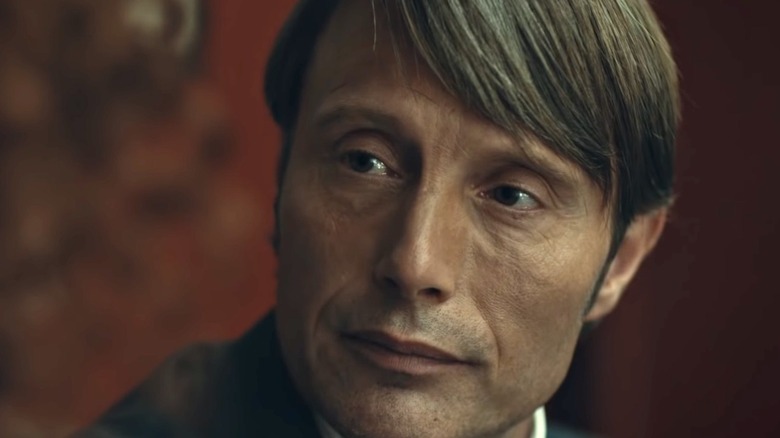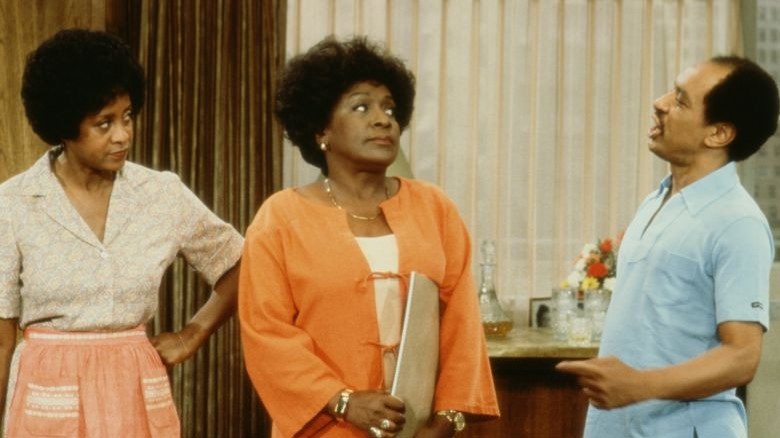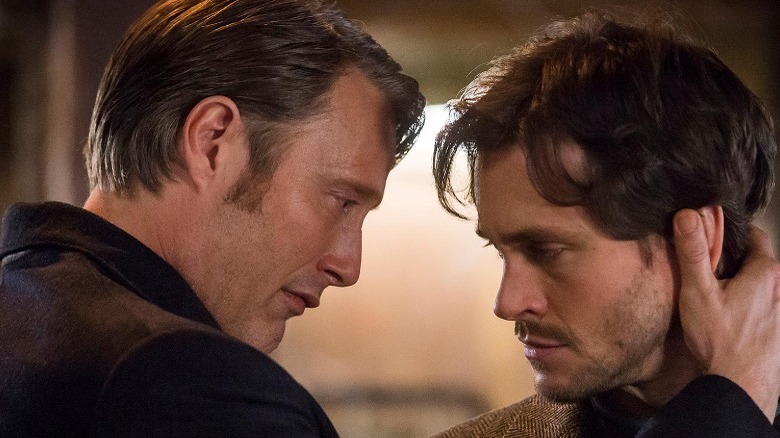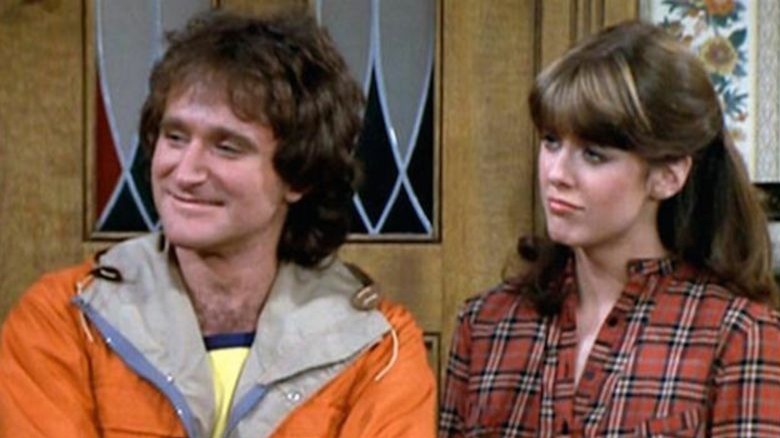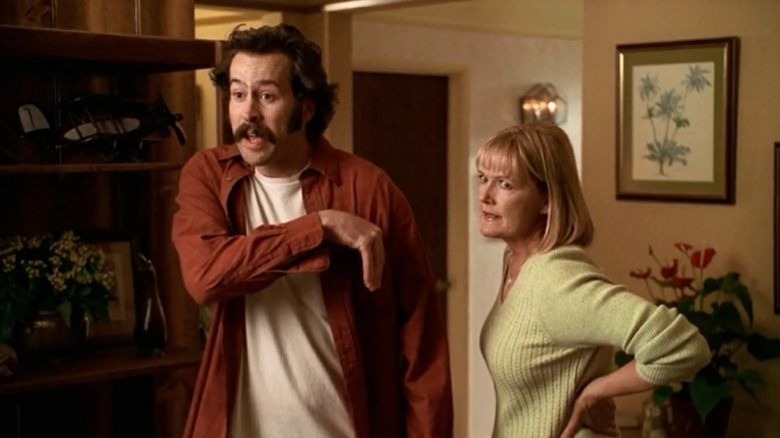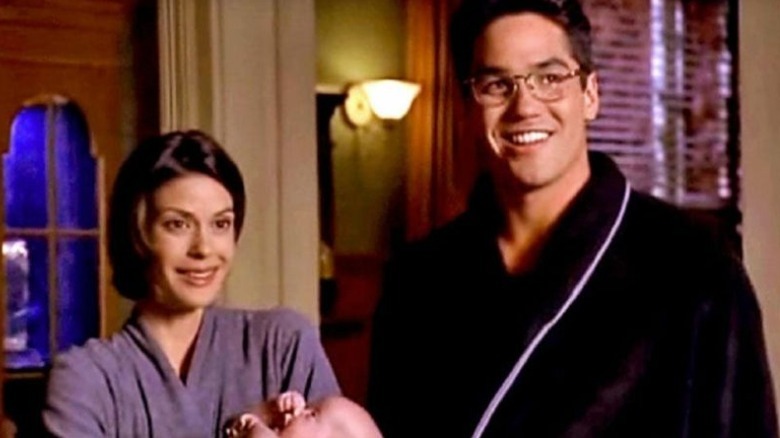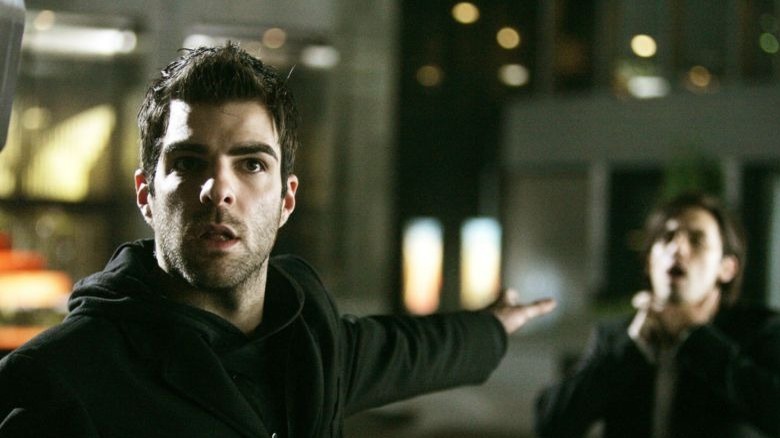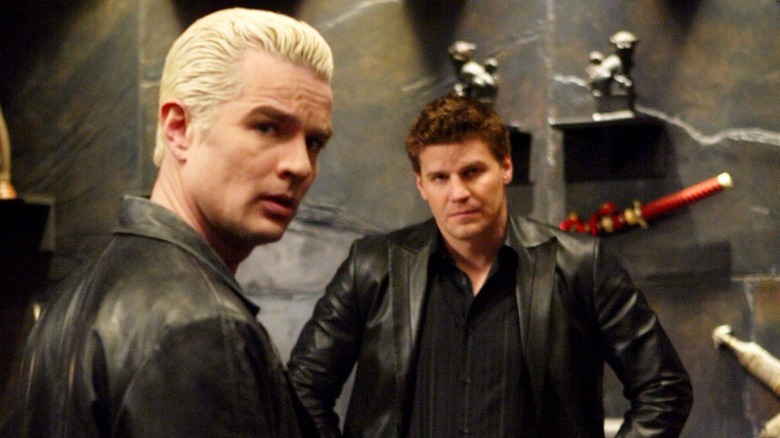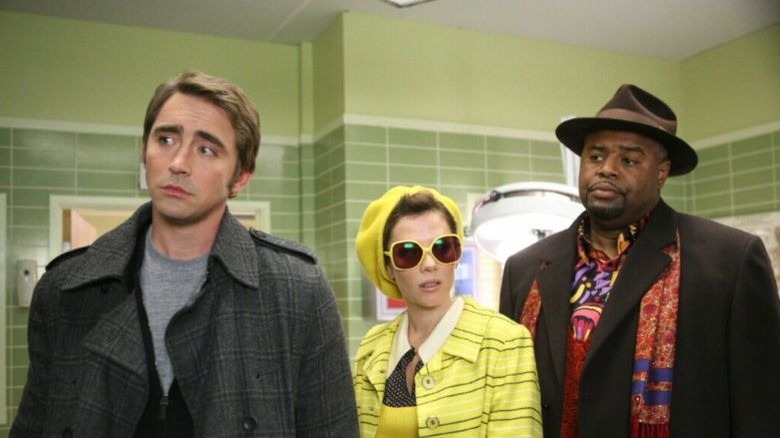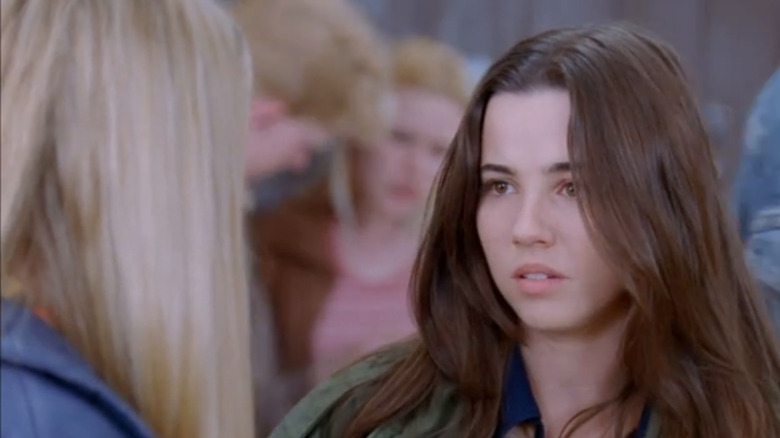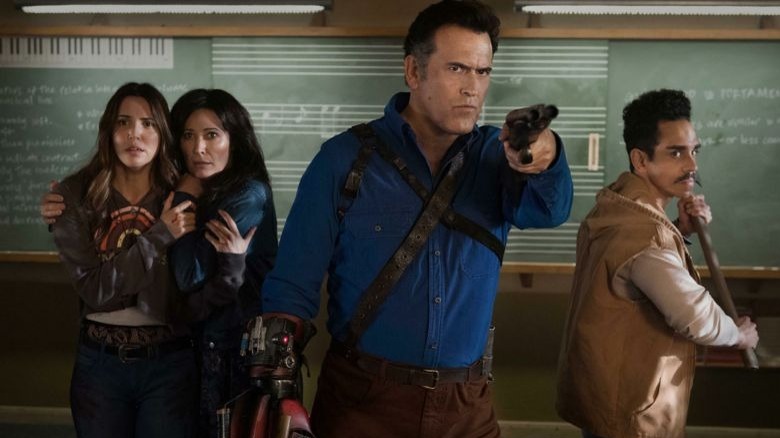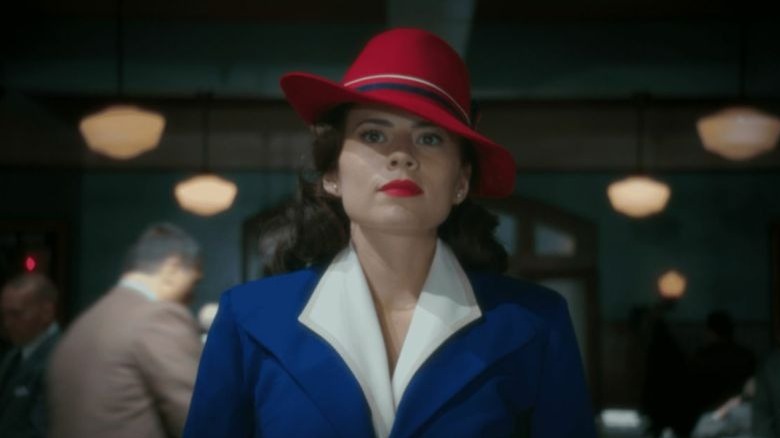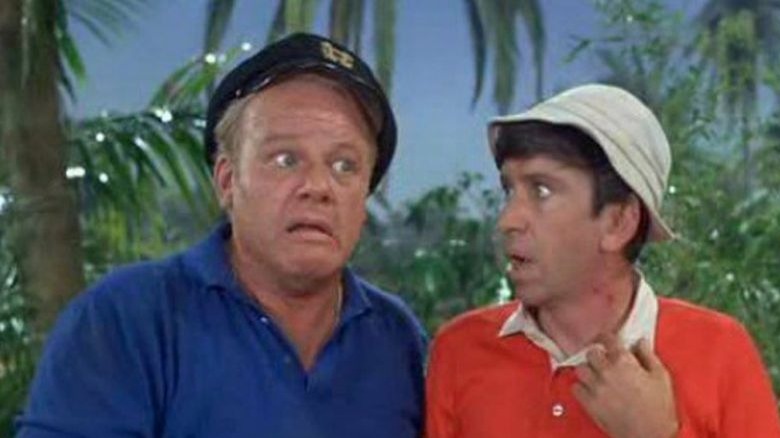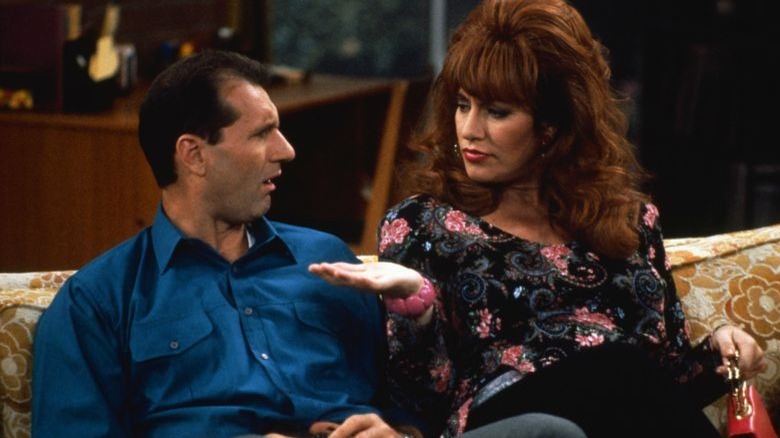Beloved TV Shows That Never Got The Ending They Deserved
In the world of pop culture, leaving a story unfinished can often feel tragic (we're looking at you, George R. R. Martin). When it comes to a solid TV series, fans are potentially subjected to disappointment after a lengthy, and sometimes emotional, investment of their time. Fictional characters begin to feel like family in a sense that we learn so much about them and become excited for their futures. In many cases, we see them grow in age and wisdom season after season. While it may be extreme to say that an abrupt cancellation feels akin to a sudden break-up, the utter disappointment still is not lost on us.
Over the years, networks have cancelled or shortened some of the best shows right from under our noses. Perhaps, the show wasn't properly marketed and reaching a wide audience. Perhaps it garnered a decent audience but even more popular shows on the network kicked it to the curb. There are a myriad of reasons why a studio might cancel a show, but whether it's for a business, legal, or any other reason it still hurts not to see our favorite characters enjoy a proper conclusion. Here's a look at some of history's best shows to be short-changed in the series finale department.
The Jeffersons
Hot off the heels of "All in the Family," George (Sherman Hemsley) and Louise Jefferson (Isabel Sanford) made the shift from being Archie Bunker's neighbors to headlining their own show as they moved on to Manhattan and continued George's successful dry-cleaning business. "The Jeffersons" enjoyed a lengthy run on network television with 11 seasons under its belt. Audiences were enamored with the hilarious couple as they coped with daily life in the Big Apple. The show even received 14 Emmy nominations and 2 wins during its time on air.
While "The Jeffersons" was absolutely a successful show, ratings did slip in the end. Out of 96 prime-time series in 1985, it ranked 59th which was down from its 19th spot a year prior. While many may have seen the cancellation as no surprise, it left the series and its ardent fanbase out in the cold. To the dismay of key cast members, some weren't informed of the cancellation until the information was already made public. In fact, Isabel Sanford, the actor behind Louise Jefferson, learned of the cancellation from her cousin who read it in the tabloids. The ending of season 11 didn't account for a conclusion to the show and, therefore, "The Jeffersons" never received proper closure.
Hannibal
Hannibal Lecter shocked audiences far and wide for his horrific taste for human flesh and his twisted philosophies. In films such as "Red Dragon" and "The Silence of the Lambs," Lecter is consulted by law enforcement for his knowledge and expertise in the realm of serial killers. Often, however, Lecter's own musings and insights on the matters at hand would cause his law enforcement partners to reflect on their own histories. Casting Lecter's own murderous nature aside, there was always a chilling effect that'd take hold by simply conversing with the man.
The show modernized the story of "Red Dragon" and placed Will Graham (Hugh Dancy), FBI profiler, in the lead role alongside Mads Mikkelsen's Hannibal. While the show often pairs the two on cases with serial killers at large, the show further explores the relationship between Will Graham and Hannibal Lecter. After only three seasons, the show was cancelled by NBC. One of the show's executive producers, Martha De Laurentiis, claims that internet piracy caused the cancelling of the show (via Yahoo! Entertainment). The show ended on a rather ambiguous note as Will Graham embraces Hannibal Lecter after a climactic moment and then seemingly pulls Hannibal along with himself over a cliff's edge. A mid-credits scene shows Bedelia (Gillian Anderson) being served her own leg on a platter. Does this imply that Hannibal survived his fall and prepared the dish? If Hannibal survived the fall, is Will also alive? We might never know thanks to the show's untimely cancellation.
Mork & Mindy
Actor Robin Williams actually caught a big break in show business with his arrival as a quirky alien character for a brief appearance in "Happy Days." Eventually, he landed his own spin-off show, "Mork & Mindy" due to the popularity of the character. Down on her luck after a spat with her boyfriend, Mindy (Pam Dawber) runs into the extraterrestrial and quickly befriends him. She allows him to live in her attic, and the rest is history. Peak moments in the series arrive in the humorous attempts made by Mork to comprehend human behaviors, cultures, and customs.
After only four seasons, "Mork & Mindy" was cancelled due to declining ratings. The series ended on a strange cliffhanger. A fifth season was clearly planned as Mork and Mindy time travel and find themselves trapped in the past. This was supposed to be resolved in season 5 according to an interview with the producers of the show (via Gizmodo), but this plot thread will forever remain open. Despite the shortened life of the show, "Mork & Mindy" made Robin Williams a household name as he would continue on to further Hollywood success.
My Name Is Earl
Like "Mork & Mindy," another show that hit the chopping block following it's fourth season is "My Name is Earl." The show's titular character, Earl Hickey (Jason Lee), is a hapless miscreant who seeks to turn his life around through the power of karma. After losing a winning lottery ticket, he begins to right the wrongs of his past. Eventually, he comes back into possession of the lost ticket and begins to expand his newfound path of righteousness and good deeds.
Earl's story was left open at the end of the fourth season. The final episode even ended with a "To Be Continued" message. This comes after the audience just learned that Earl Jr's. (Trey Carlisle) real father isn't exactly who we thought it was. Unfortunately, for fans of the show, that continuation never came to fruition and we'll never learn the truth of Earl Jr's. lineage.
Lois & Clark: The New Adventures of Superman
We've seen several on-screen iterations of Clark Kent over the years. But "Lois & Clark" presented the Kryptonian superhero in a much different, light focusing on Clark (Dean Cain) as the true identity of the hero instead of Superman. The series especially delved into Clark's relationship with Lois (Teri Hatcher), as the title would indicate. During the four seasons of the show, audiences witnessed their relationship blossom from co-workers to marriage. Drama ensues particularly when Lois and Clark's relationship is on the rocks –- typically a result of his "other" job as Superman.
In the fourth season, Lois and Clark seal the deal on their relationship in holy matrimony, but they quickly learn that they are unable to conceive a child. However, in the final episode of the series the pair are left a mysterious infant shrouded in a blanket featuring the Superman "S" logo. Season 5 would've revealed the origins of the child and continued that storyline according to the show's executive producer (via Entertainment Weekly). However, the series was cancelled and fans were unable resolve that mystery.
Heroes
Before superhero media took off with the start of the Marvel Cinematic Universe, movie production studios and TV networks still took advantage of the comic book medium that always maintained a strong following. "Heroes" was a wholly original superhero drama that sought to mimic comic books in the form of a TV show. It presented characters with self-contained stories in volumes and then brought these characters together in big climactic events. The super heroes of the story are initially ordinary people that discover they have abilities. One of the key villains of the series, Sylar (Zachary Quinto) was an individual envious of others' genetic powers and discovers a way to take them. The story was quite revolutionary for its time and the first season drew in a massive audience.
The series culminates in the fourth and final season where the group must stop a deranged man by the name of Samuel (Robert Knepper) from unleashing a plan to commit mass murder in order to reveal people with special abilities to the world. Following this climactic showdown, Claire Bennet (Hayden Panettiere) reveals her seemingly invincible ability to reporters. This would then lead into the next storyline that never happened. A semi-revival occurred with the miniseries entitled "Heroes Reborn." However, this wasn't a direct continuation of the events of season 4. Additionally, while including some of the characters from the original story, it focused on new characters in a plot that was far removed from the events of the original series. "Heroes" still deserves a better ending than the one it received.
Angel
"Angel" spun out of the success of "Buffy the Vampire Slayer." The series presented a different, heroic take on vampires as Angel (David Boreanaz) is tortured by his own guilt after recalling years of murder and bloodshed towards innocents. This sudden revelation is brought about when his human soul is returned to him as part of a curse. Still maintaining his vampiric attributes, Angel must straddle the line between controlling his demonic nature and helping others to assuage the guilt of his blood-soaked past.
The show was cancelled after five seasons. Toward the end of the series, Angel, his friends, and associates are engaging in a potentially suicidal offensive against the Circle of the Black Thorn, a mysterious cult set on bringing about the Apocalypse. After taking care of business, the crew are pitted against an army of monsters where they're seen heading into battle in what seems to be impossible odds. Unfortunately, audiences never learned the fate Angel and his comrades.
Pushing Daisies
With only two seasons under its belt, "Pushing Daisies" still managed to leave behind a void following its cancellation. The show's unique premise managed to capture the attention of those with a penchant for black comedy. The show follows Ned (Lee Pace), a pie-maker who also has the gift to override death. Simply touching a person who has died allows Ned to bring them back to life. The catch is that someone else will randomly bite the dust as a form of universal balance. Another unfortunate catch is that if Ned touches a person a second time after resurrecting them, they die permanently. At one point in Ned's life, he finds that his gift is useful for solving murder cases as he simply has to resurrect a person to obtain the identity of their murderer and then return them to their death bed before the universe takes someone else in their place.
Although, critics praised the series, ratings declined in season 2 and ABC pulled the plug on the series. The show was able to rush together a finale for the final episode. However, many threads remained open. "Pushing Daisies" could use a revival or at least a proper send-off. In an interview with Vanity Fair, the series creator Bryan Fuller expresses great enthusiasm for reviving the series and ensures ABC knows he's ready for the opportunity frequently.
Freaks and Geeks
Aptly titled, "Freaks and Geeks" features High School students in the early 80s navigating the social maze of the teenage landscape. Lindsay Weir (Linda Cardellini) seemingly attempts to change her persona from an all-star student to a slacker. She manages to find burnouts for friends like Daniel Desario (James Franco) and Ken Miller (Seth Rogen) who aid this change of appearances. Their crew make up the "freaks" portion of the show's title. Meanwhile, her brother Sam and his pals are regarded as the geeks and treated as such among their peers.
The show managed only a solitary season before being cancelled. At the time the audience simply never materialized. Since the show's airing, however, it became a cult classic and kicked off careers for many of the actors. Many would later appear in executive producer Judd Apatow's films. Paul Feig even had plans in place for the future of the series which he described in detail in an interview with Vanity Fair. According to Feig, the cast weren't meant to stay in high school forever and would've eventually move into adulthood.
Ash Vs Evil Dead
The cult classic Sam Raimi "Evil Dead" trilogy was sure to make a return in some form. Over the years, the franchise has attracted a hefty fanbase within the horror genre. In 2013, a reboot of the franchise hit theaters, but it didn't feature the famed character of the series, Ash Williams (Bruce Campbell) -– with the exception of a brief after-credits scene. Long-time fans were finally granted their deepest desire when Starz announced the series "Ash vs Evil Dead." Bruce Campbell was back in the saddle as Ash Williams combating the forces of evil all over again.
Ultimately, much to the dismay of the loyal fanbase, "Ash vs Evil Dead" was cancelled after the third season following an unresolved cliffhanger. Fans made an attempt to petition to other streaming services to pick up the series, but the struggle was futile. Ash found himself in a strange future leaving the entire narrative in limbo.
Marvel's Agent Carter
The Marvel Cinematic Universe has been a mainstay in pop culture for more than a decade. Countless movies, TV shows, and tie-ins have covered a vast amount of time and space in the epic Marvel storyline. "Marvel's Agent Carter" was an early attempt to shine the spotlight on women in the MCU. After being introduced to the fierce Peggy Carter (Hayley Atwell) in "Captain America: The First Avenger," fans had the opportunity to see the trajectory of her life following Captain America's seeming demise.
Ultimately, the promise is that we'd eventually see the establishment of S.H.I.E.L.D. However, the series didn't last long enough to reach that point. After only two seasons, the series was cancelled by ABC due to low viewership. Despite the closure of the overall season 2 arc, the show managed to leave an open thread as we witness an assassin steal files on Agent Carter. While we all know Peggy's story has happy ending thanks to "Avengers: Endgame," there's a lot of Marvel history that we are losing not seeing her story fully fleshed out.
Gilligan's Island
Who knew that stranding a handful of people on a remote island would make such a great premise for a sitcom? "Gilligan's Island" has left its mark on TV history thanks to its endearing cast of characters and funny storylines. The Skipper of the S.S. Minnow (Alan Hale Jr.), and his first mate Gilligan (Bob Denver), do their best to help the passengers of the boat survive daily life on the island. The passengers consisted of a millionaire couple, a movie star, a professor, and a farm girl offering plenty of opportunities for varied perspectives from each of the show's cast of characters.
While the series may have slipped in its ratings during the third season, it still managed to maintain a healthy viewership among audiences. It was easily destined for a fourth season... until "Gunsmoke" stole its spot. "Gunsmoke" was initially cancelled by CBS. However, another CBS executive's wife favored "Gunsmoke" which influenced the executive to "un-cancel" the show and kick "Gilligan's Island" to the curb instead. The show never saw the stranded bunch return home. While TV movies and animated spin-offs were made years later portraying the crew's rescue and transformation of the island into a resort, they never quite equated to a successful conclusion of the original beloved TV series.
Married... With Children
The Bundy family dominated the airwaves from 1986 through 1997. "Married... With Children" features a typical American family in the suburbs of Chicago. The patriarch, Al Bundy (Ed O'Neill), is the stereotypical beer-bellied slouch who makes ends meet for the rest of the family. His wife, Peggy (Katey Sagal), desires to spend money without contributing to the family income or doing much around the house. The two children, Kelly (Christina Applegate) and Bud (David Faustino), are the typical stand-ins for rebellious teens who often poke fun at each other.
The series caused controversy over the years due to crude, stereotypical jokes and Al Bundy's misogynistic tendencies. Despite the backlash, the show managed to last 11 seasons. While "Married... With Children" didn't leave off with any major cliffhanger, the network cancelled the show rather abruptly which didn't leave any room for a proper farewell episode. The Bundy family never received the true send-off that they easily earned after 11 seasons on air.
